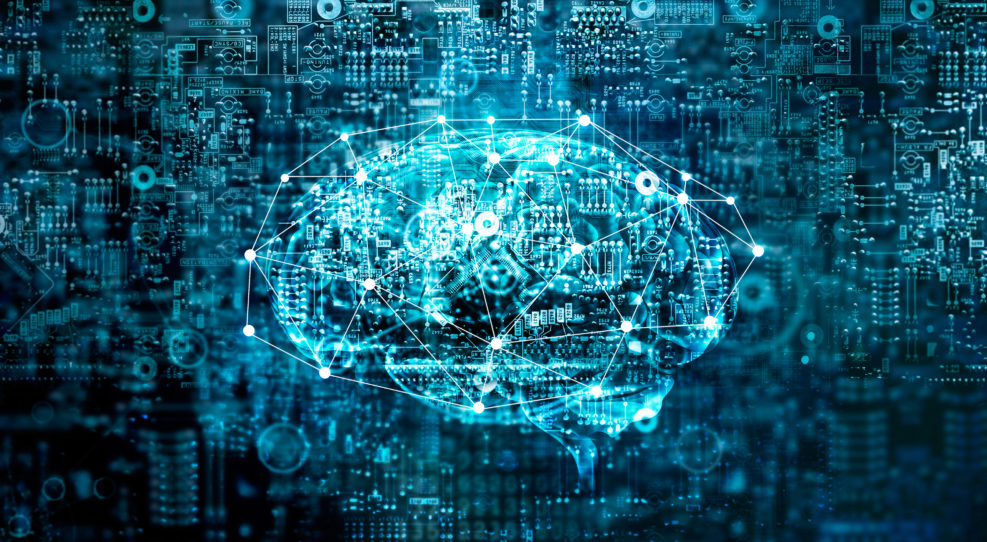
ArchiveArticles


Babies Can Understand Whole Sentences Before They Can Speak
Before uttering their first word, a new study suggests, children can understand what groups of words mean togetherIn a recent study of 11–12 month olds published in Cognition, researchers found that infants on the verge of saying single words themselves can already process complete sentences such as “Clap your hands.” The research sheds light on the difficulties adults have learning second languages if they focus too intensely on single words: Dr Barbora Skarabela, of the School of Philosophy, Psychology and Languages Sciences, said: “Previous research has shown that young infants recognise many common words. But this is the first study that shows that infants extract and store more than just single words from everyday speech. This suggests that when children learn language, they build on linguistic units of varying sizes, including multiword sequences, and not just single Read More ›

Why a “Budding” Neuroscientist Is Skeptical of Brain Scans
After reading her perceptive essay about the problems in fMRI imaging in neuroscience, I’m sad that a gifted student has doubts about a career in the fieldKelsey Ichikawa has just published a superb essay about the pitfalls of functional magnetic resonance imaging (fMRI) of the brain. Ms. Ichikawa (pictured), who describes herself as a ”budding” neuroscientist who graduated last year from Harvard, discusses the snares into which misinterpretation can lead us. fMRI brain scanning is a relatively new technology in which researchers and clinicians use magnetic resonance images (MRI) of the brain to detect brain activity almost as it happens. The technique is widely used, both for clinical care of patients (neurosurgeons use it to map sensitive parts of the brain prior to surgery) and for research purposes. A major thrust of neuroscience research in the last couple of decades has been the use of fMRI Read More ›

Chaitin’s Number Talks To Turing’s Halting Problem
Why is Chaitin’s number considered unknowable even though the first few bits have been computed?In last week’s podcast,, “The Chaitin Interview V: Chaitin’s Number,” Walter Bradley Center director Robert J. Marks continued his conversation with mathematician Gregory Chaitin( best known for Chaitin’s unknowable number) on a variety of things mathematical. Last time, they looked at whether the unknowable number is a constant and how one enterprising team has succeeded in calculating at least the first 64 bits. This time, they look at the vexing halting problem in computer science, first identified by computer pioneer Alan Turing in 1936: https://episodes.castos.com/mindmatters/Mind-Matters-128-Gregory-Chaitin.mp3 This portion begins at 07:16 min. A partial transcript, Show Notes, and Additional Resources follow. Robert J. Marks: Well, here’s a question that I have. I know that the Omega or Chaitin’s number is based Read More ›

Has the United States Lost Silicon Valley?
Once on friendly terms with the U,S, Department of Defense, Silicon Valley must consider the views of its friends in ChinaRecently, we learned that China had, for the first time, surpassed the United States in AI patent filings: The development was revealed by Li Yuxiao, Deputy Head of the Chinese Academy of Cyberspace Studies at the 7th World Internet Conference (WIC), reports SCMP. With this, China is now bolstering its position of being a leader in AI. As per the report, China had filed more than 110,000 artificial intelligence patents last year, more than the patents filed by the United States but the number of patents filed by the country has not been disclosed. “China surpasses US for the first time in artificial intelligence patent filings” at TECHregister (November 27, 2020) Now, people have been claiming that innovative competitiveness is Read More ›

The Mystery of Blindsight Helps Us Understand the Mind Better
How can a blind person demonstrate awareness of an object in his visual field — and yet not be conscious of it?Blindsight is the remarkable ability of some blind people to sense objects that they cannot actually see. It occurs when the blindness is caused by damage to the main part of the brain that processes visual information (the striate cortex). But the eyes themselves are intact. The eyes continue to see (sensation) but nothing is receiving the messages (perception). Or so we would think, except for this: One of the most contentious discussions in philosophy of mind and neuroscience is the nature of perception as opposed to sensation. How can we perceive objects in our environment? On a deeper level, what do we mean by “perception”? In what ways does perception differ from sensation, if at all? The neurobiology of Read More ›

Why Would a Neuroscientist Choose Panpsychism Over Materialism?
It seems to have come down to a choice between “nothing is conscious” and “everything is conscious”A really significant change in brain science in recent years has been the gradual acceptance in mainstream science venues of sympathy for panpsychism — the position that everything is conscious to some degree. Leading neuroscientist Christof Koch, for example, explained last month in MIT Reader: But who else, besides myself, has experiences? Because you are so similar to me, I abduce that you do. The same logic applies to other people. Apart from the occasional solitary solipsist this is uncontroversial. But how widespread is consciousness in the cosmos at large? How far consciousness extends its dominion within the tree of life becomes more difficult to abduce as species become more alien to us. One line of argument takes the principles Read More ›

How WOULD We Know If an AI Is Conscious?
It might be more complicated than we think. A powerful zombie is still a zombie.Neuroscientist Joel Frohlich (pictured) asks us to reflect on the “philosophical zombie.” That’s not the zombie of the late nite frites. It’s an entity that behaves outwardly in every respect like you and me but has no inner experience (think Stepford Wives). Philosopher David Chalmers originated the term in 1996, by way of illustrating why consciousness is a Hard Problem. A powerful computer can crunch through many difficult jobs without any inner life or consciousness. But, Frohlich, who is editor in chief of the science communications website Knowing Neurons, asks, what if we weren’t sure? How would we test that? Trying to determine if a powerful AI is conscious means getting past programming that might enable it to generate plausible Read More ›

Sci-fi Saturday: When Terraforming Mars Means Mars-forming People
In this award-winner, the underground humans must, according to the terraforming colony's rules, deny emotion, which pretty much guarantees a story“New Mars” at DUST by Susie Jones (March 30, 2021, 19:14 min) Earth is no more. A new generation lives underground on Mars preparing to begin a new life as the colonists of a planet which is being terraformed into a new habitable world. ‘New Mars’ is a society driven by science and logic to ensure humans will not make the same destructive decisions this time round. But two young hopefuls struggle with the intensity of their feelings – which inadvertently propels them towards an unexpected truth about their existence. (IMDB) “New Mars” premiered in 2019 and has won a number of awards. It conveys the claustrophobia of an underground world where death rules the planet’s surface. Life on a Read More ›

The Surprising Role Dolphins Have Played in the Search for ET
Dolphins, with their apparent alien intelligence, have been seen by scientists interested in ET as a stand-inIn a recent essay, Thomas Moynihan, a researcher with Oxford’s Future of Humanity Institute, puts the explosion of interest in dolphin intelligence in context: It began during the Space Race (1957–1998) — which helped fuel and fund the search for extraterrestrial intelligences. Its development also coincided withe Cold War (1946–1991) between the US and the USSR. In 1961, amid the growing tensions, neuroscientist John C. Lilly claimed that he had made contact with the first “alien” intelligence. But, as Moynihan says, Lilly “wasn’t talking about little green men from Tau Ceti, he was talking of minds much closer to home: bottlenose dolphins.” Why dolphins? As Moynihan recounts, from ancient times, mariners knew that dolphins were intelligent and modern zoologists like Read More ›

Before Digital: The World’s Most Amazing Windup Toys
Before electronics, there was mechanics — and it’s amazing what human ingenuity can do with a simple windup mechanismWindup toys were what we had before we had electricity and robotics. Some very elaborate ones were designed by clockmakers, starting in the late sixteenth century. Most of these clever clockworks, if they survived at all, survive only as faithful replicas. In order of approximate dates, here are some that did — remarkable testimonies to human skill, artistry, and cleverness: 1560s: One of the earliest is a mechanical monk: “The lore surrounding the monk is that King Philip II, son of Charles V, commissioned [clockmaker Juanelo] Turriano to create the penitent automaton after Philip’s son had recovered from a deathly illness. The king of Spain had prayed for his son’s recovery, promising a miracle for a miracle, and this machine Read More ›

Is Chaitin’s Unknowable Number a Constant?
One mathematics team has succeeded in the first 64 bits of a Chaitin Omega numberIn this week’s podcast, “The Chaitin Interview V: Chaitin’s Number,” Walter Bradley Center director Robert J. Marks continued his conversation with mathematician Gregory Chaitin, best known for Chaitin’s unknowable number. In this segment, Dr. Marks and Dr. Chaitin discuss whether the unknowable number is really a number… or is it a constant? In earlier podcasts linked below, they have discussed a variety of topics ranging from gifted mathematicians of the past through how to understand creativity in a mathematical way—and more. https://episodes.castos.com/mindmatters/Mind-Matters-128-Gregory-Chaitin.mp3 This portion begins at 01:32 min. A partial transcript, Show Notes, and Additional Resources follow. Robert J. Marks (pictured): I want to clear up something first of all. Stanford’s Thomas Cover and Joy Thomas wrote a book that Read More ›

How China’s “Hostage Diplomacy” Traps Unsuspecting Visitors
Canada’s “Two Michaels” await their fate in prison in China, hostages to the growing tensions in a high-tech warCanadian entrepreneur Michael Spavor (pictured) and former Canadian diplomat Michael Kovrig were arrested in China in 2018 on charges of espionage and sharing state secrets, and held in prison since then. Spavor’s trial was on March 19, 2021, in Dandong near China’s border with North Korea. Kovrig’s trial was on March 22 in Beijing. As of this writing, no verdict has been announced. Their trials coincided with the U.S-China Summit in Anchorage, Alaska, on March 18 and 19, 2020, which involved a tense back-and-forth between the two countries. Court proceedings were closed-door and Spavor’s and Kovrig’s lawyers were not allowed to be present. That, according to Canada’s deputy chief of mission in China, violates the Canada-China consular agreement. Prime Minister Read More ›

Can Mathematics Help Us Understand Consciousness?
Gregory Chaitin asks, what if the universe is information, not matter?In last week’s podcast, “The Chaitin Interview IV: Knowability and Unknowability,” Walter Bradley Center director Robert J. Marks interviewed mathematician Gregory Chaitin, best known for Chaitin’s Unknowable Number, on, among other things, consciousness. What can mathematics contribute to the discussion. Also, what does Chaitin think about panpsychism (everything is conscious”)? The discussion began with reference to David Chalmers’s 1996 book, The Conscious Mind: In Search of a Fundamental Theory, in which Chalmers coined the term “Hard Problem of Consciousness.” The term acknowledged what everyone knew, that human consciousness is a very difficult problem to understand, especially from a materialist perspective.Are there other approaches? Chaitin offers a look at the challenge panpsychism presents to materialism: https://episodes.castos.com/mindmatters/Mind-Matters-127-Gregory-Chaitin.mp3 This portion begins at 28:25 Read More ›

The Fundamental Problem With Common Core Math
Intuition relies on skill, not the other way aroundIn 2010, a bold effort to reform math curriculum was adopted by the majority of the United States. Known as “Common Core Math,” the goal of this endeavor was to establish a common foundation of mathematics education across the country, and to help bolster not only students’ mathematical abilities, but also their mathematical intuition. The goal was to help students think about math more deeply, believing that this will help them work with mathematics better in later years. Before discussing problems with this approach, I want to say that I appreciate the idea of helping students think more deeply about mathematics. After years and years and years of mathematics education, many students wind up thinking about mathematics as merely a set Read More ›

Influential Think Tank Declines Big Tech Donations
The Heritage Foundation declined six-figure donations from Big Tech companies Facebook and Google in 2020, citing repeated censorship of conservative viewsNews website Axios obtained letters signed by Heritage Foundation‘s departing President Kay Coles James (pictured), addressed to the CEOs of both Facebook and Google in October 2020, explaining why Heritage felt compelled to decline the six-figure contributions from the companies. “We cannot in good conscience take money from a company that repeatedly, and blatantly, suppresses conservative speech on your platforms,” reads the letter to Google CEO Sundar Pichai. A similar statement is made in the letter to Facebook CEO Mark Zuckerberg. Heritage declined $225,000 from Google, and returned $150,000 that came from Facebook. The Heritage Foundation made several accusations against the companies in its letters, including: that Facebook suppressed their reach by blocking referral traffic; that Facebook targeted Heritage with third-party fact-checkers; and that Google Read More ›

Why Human Creativity Is Not Computable
There is a paradox involved with computers and human creativity, something like Gödel’s Incompleteness Theorems or the Smallest Uninteresting NumberIn last week’s podcast, “The Chaitin Interview IV: Knowability and Unknowability,” Walter Bradley Center director Robert J. Marks interviewed mathematician Gregory Chaitin, best known for Chaitin’s Unknowable Number, on a number of things, including whether computers can show creativity. Chaitin has thought a lot about that: https://episodes.castos.com/mindmatters/Mind-Matters-127-Gregory-Chaitin.mp3 This portion begins at 21:34 min. A partial transcript, Show Notes, and Additional Resources follow. Robert J. Marks: We’re talking, just in general, about the unknowable. Roger Penrose recently won a Nobel Prize for his work with Stephen Hawking on black hole theory. He also wrote a book called The Emperor’s New Mind: Concerning Computers, Minds and The Laws of Physics (1989) and he followed it up with The Shadows of the Mind: Read More ›

Practicing the Basics: Teaching Math Facts in the Classroom
How to help students make deeper connections within mathematics with creative games.Many people learn to hate math early on. One of the places where people learn to hate math first is in high-stakes speed testing for math facts. This has caused quite a bit of angst in mathematics education for people on both sides of this issue. On the one hand, some have advocated for getting rid of math facts memorization altogether. On the other hand, others have doubled-down, saying that we need speed tests in order to make sure that the cognitive load of arithmetic is limited for later mathematics work. While I fall more into the latter camp than the former, I do think that a more balanced approach to mathematics education may help students in the long run. Read More ›

The Paradox of the Smallest Uninteresting Number
Robert J. Marks sometimes uses the paradox of the smallest “uninteresting” number to illustrate proof by contradiction — that is, by creating paradoxesIn this week’s podcast, “The Chaitin Interview IV: Knowability and Unknowability,” Walter Bradley Center director Robert J. Marks interviewed mathematician Gregory Chaitin on how he proved that the number that determines whether computer programs are elegant (in the sense of maximally efficient) is “unknowable.” As Dr. Chaitin explained in the segment published yesterday, any solution would be contradictory. Thus, his proof is a proof by contradiction. By way of illustrating the concept of proof by contradiction, Dr. Marks then offered his proof by contradiction that “all positive integers — numbers like 6 or 129, or 10 100 — are interesting.” This portion begins at 19:45 min. A partial transcript, Show Notes, and Additional Resources follow. Robert J. Marks: If [some Read More ›

The New Retail: Cash or Face Scan? Is This Safe?
Retailers, anxious to speed up checkout lineups tend to brush off privacy and security concerns about payment by face recognitionThe new face of retail is yours, according to a latest trend — paying with your face via biometric scanning. Russia’s largest food retailer, X5 Retail Group, in partnership with VISA and Sber (a bank), is introducing payment via facial recognition (face scanning) at the checkout counters of supermarkets and convenience stores. The trial at 52 stores succeeded well enough that the firm hopes to institute “facepay” (?) at 3000 stores. It works, at least technically, because we are more unique than we think: With the huge rise in digital wallets, biometrics – face or hand recognition – has started to become more popular as the safest means of protecting customers from identity fraud. Because nobody can replicate or guess Read More ›